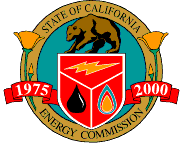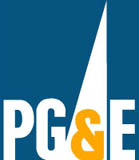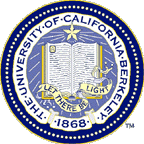Documenting Incidents
of Ground Failure Resulting from the
August 17, 1999 Kocaeli,
Turkey Earthquake
Collaborative Research by U.C. Berkeley,
Brigham Young Univ., and UCLA
with ZETAS, Sakarya Univ., and Middle
East Technical Univ.
Sponsored by NSF,
Caltrans,
CEC,
PG&E
and the PEER Lifelines
Program
Project Objectives: Significant
occurrences of ground failure in the form of liquefaction, ground softening,
and lateral spreading were documented by NSF-sponsored reconnaissance teams
in several areas affected by the 1999 Kocaeli earthquake (Mw
= 7.4). The primary goal of this project is to characterize the subsurface
conditions at sites where ground deformations and/or building movements
were well documented. Site characterization is being completed through
the use of the cone penetration testing (some with pore pressure and shear
wave velocity measurements) and rotary wash borings with primarily standard
penetration testing (with energy measurements with the SPT Analyzer).
The project is divided into 4 phases as shown below, with emphasis given
to developing the data necessary to analyze the relationship between ground
failure and building damage, to assess the threshold for liquefaction triggering
for soils with significant fines (both non-plastic and plastic), and to
document ground conditions and displacements at several sites of minor
and significant lateral spreading. The data being collected through
this research is being made available through this website as soon as possible
to support the efforts of other investigators interested in these problems.
Project Benefits for California:
The goal of California’s Seismic Hazards Mapping Act is "to protect public
safety from the effects of strong ground shaking, liquefaction, landslides,
or other ground failure, and other hazards caused by earthquakes" (CDMG
SP-117, 1997). The seismic hazards mapping effort is largely based
on empirical methods that require re-evaluation and updating as important
case histories emerge. Critical lessons can be learned from studying
ground failure during the Turkey earthquake, because the soils and earthquake
shaking represent one of the controlling earthquake hazards in California
(i.e. poor soils close to large magnitude earthquakes). Ground failure
incidents were widespread in Turkey, where hundreds of structures settled,
tilted and collapsed due in part to liquefaction and ground softening.
There were also observations of ground failure that have not been documented
previously, such as horizontal translation of building founded on softened
ground. An in-depth examination of these cases is required to ensure
the profession is not ignoring an important earthquake hazard. Observations
from design level earthquakes are invaluable to advancing the state-of-practice
in earthquake engineering, and observations of ground failure in Turkey
are transferable to California.
|
Phase
1
|
Phase
2
|
Phase
3
|
Phase
4
|
|
Ground
Failure and Building Performance in Adapazari, Turkey
Jonathan D. Bray, University
of California, Berkeley
with A. Önalp of Sa.
U., H. T. Durgunoglu of ZETAS, & J. Stewart of UCLA
|
CPT
Liquefaction Investigations, Adapazari, Turkey
T. Leslie Youd,
Brigham Young University
with J. D. Bray of UCB,
A. Önalp of Sa. U.,
H. T. Durgunoglu of ZETAS, & J. Stewart of UCLA
|
Geotechnical
Site Investigation at Electrical Sub-Stations
Jonathan D. Bray, University
of California, Berkeley
with H. T. Durgunoglu of
ZETAS, A. Önalp of Sa. U., & R. Seed of UCB
|
Geotechnical
Site Investigation at Lateral Spread Sites
T. Leslie Youd,
Brigham Young University,
& K. Ö. Çetin of METU
with J. D. Bray and R.
Seed of UCB, H. T. Durgunoglu of ZETAS & A. Önalp of Sa. U.
|
|
Project
Description
|
Project
Description |
Project
Description |
Project
Description |
|
Data
& Site Location
|
Data
& Site Location |
Data
& Site Location |
Data
& Site Location |
Additional Information:
This is an ongoing research project, so this website will be updated periodically
as more information becomes available. Please contact the website
manager, Mr. Rodolfo B. Sancio,
if you have any questions regarding the data presented on this website. |
|
|
|
|
Sponsors
|

|

|

|

|














